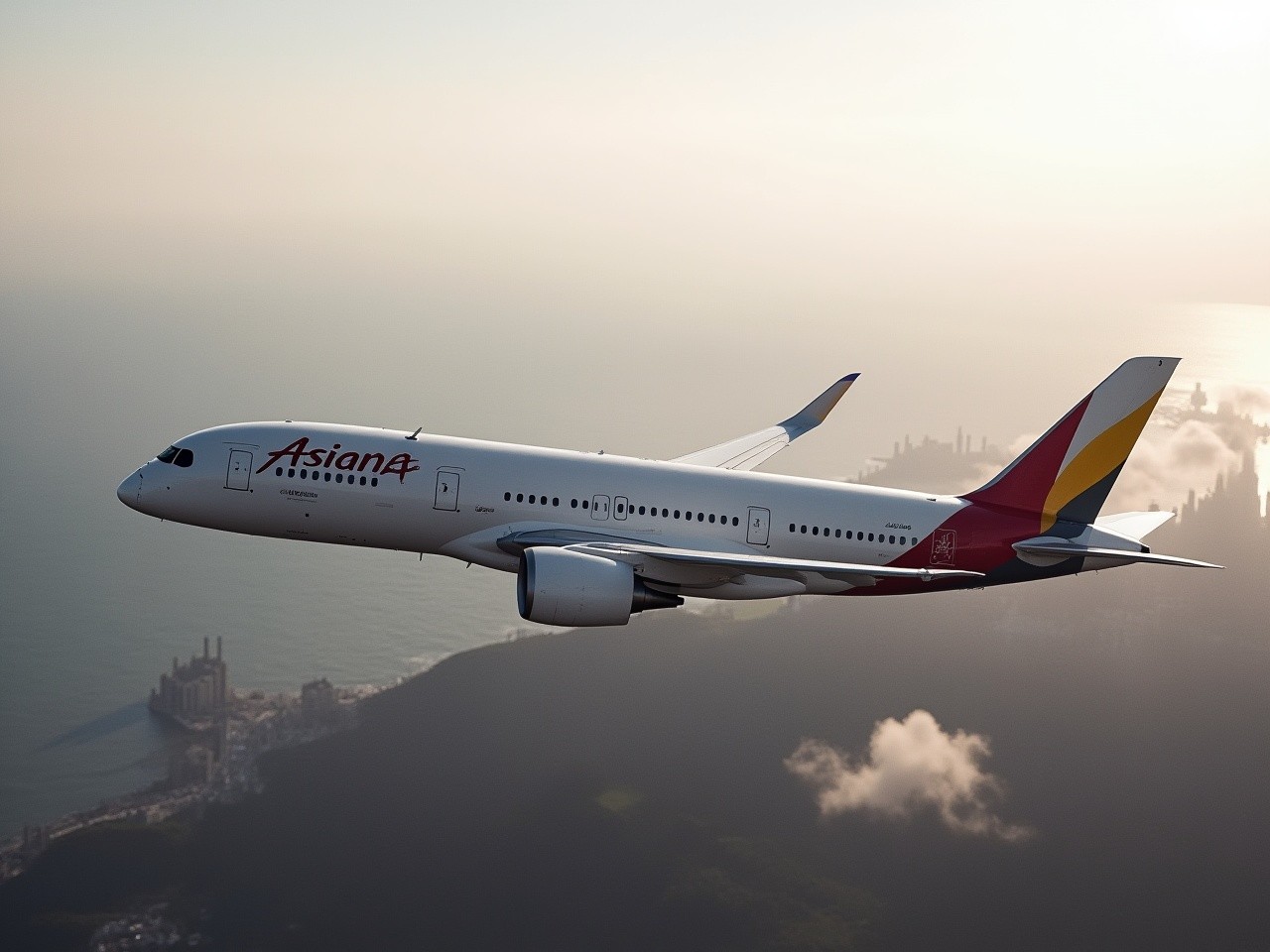Sunday, July 27, 2025
Asiana Airlines (OZ) will reduce frequencies of flights between South Korea and the United States for the winter 2025 season. The cutbacks, which primarily affect service to San Francisco and Seattle, are part of the airline’s push to better deploy its fleet and improve its operations.
The biggest cut will be for the Seoul–San Francisco (SFO) line, with the airline bringing down capacity by half. Over the period November 2025 to December 2025, Asiana’s schedule will see 5 flights a week between Seoul Incheon International Airport and San Francisco. Flights to Seattle-Tacoma International Airport (SEA) will also be reduced by 20% in September and October 2025.
Reduced Transpacific Services
Asiana Airlines has long been a key player in transpacific air travel, with well-established routes connecting Seoul to major U.S. cities. The ICN–SFO route, in operation since the early 1990s, is currently served by the Airbus A350-900, which offers 311 seats across three classes.
For winter 2025 the airline will offer only five flights a week between Seoul and San Francisco, flying 4,917 nautical miles (9,106 km) taking 11 hours approximately. This loss is symptomatic of broader shifts in the airline’s transpacific approach. Other airlines on the route are Korean Air, United Airlines and Air Premia.
Asiana‘s ICN–SEA meanwhile will drop from seven to five weekly for September and October 2025. The Boeing 777-200ER is commonly used for these international flights, with the capacity to seat 300 passengers, in two classes. The journey spans 4,533 nautical miles (8,394 km) and lasts approximately 10.5 hours.
Fleet and Competitive Landscape
Asiana Airlines operates a fleet of 15 Airbus A350-900s, with a further 15 on order. The Dreamliners are deployed on long-haul routes and have a configuration of 28 business class, 36 premium economy and 247 economy seats. Asiana operates 22 business class and 278 economy seats on the Seattle route, which it says represents its smallest long-haul aircraft, among the nine used for the route alongside other destinations.
Even with such cuts, the routes are competitive. Korean Air, Delta Air Lines and Air Premia also have flights between South Korea and the U.S. West Coast. Alaska Airlines will also launch nonstop service between Seattle and Seoul in September 2025 in collaboration with Hawaiian Airlines to make the competition fiercer.
The Korean Air–Asiana Merger
The flight reductions are being done in parallel with the continued combination of Asiana Airlines and state-controlled Korean Air, a tie-up approved by the South Korean government in 2020. In December 2024, Korean Air purchased a controlling stake in Asiana and became a subsidiary. It is anticipated that the combination will be fully effective by December 2026.
They expect that project will allow for the reduction of 22 flights, including Seoul- Ho Chi-Minh City, Seoul -Jakarta and Seoul-Istanbul. The two carriers currently have large hubs in Seoul Incheon International Airport and the merger is designed to increase efficiency and enhance competitiveness. Korean Air has promised not to lay off any staff during the integration.
Impact on U.S.–South Korea Travel
The service reductions suggest a change of strategy at Asiana in transpacific flying, possibly due to efforts to right-size its fleet or reorganize its network. Although the cuts may reduce choices for passengers in the short term, the goal in the long term is to operate more efficiently.
Passengers traveling to or from the U.S. and South Korea will want to stay aware of these developments, with more schedule changes, fleet shifts and market dynamics inevitable as the Korean Air-Asiana integration unfolds. The changing landscape will alter the U.S.-South Korea air travel game for years to come.
